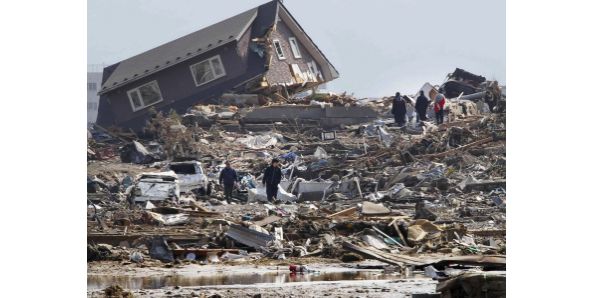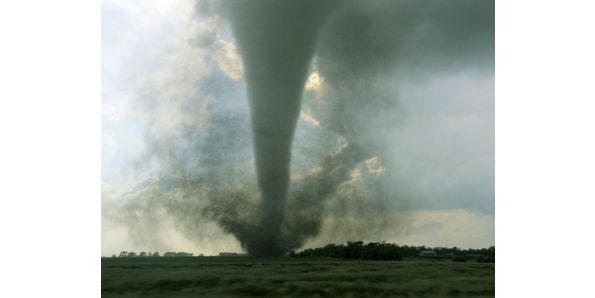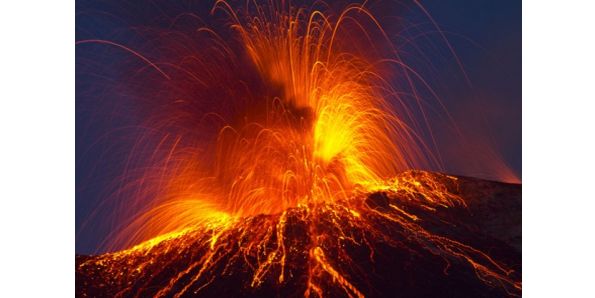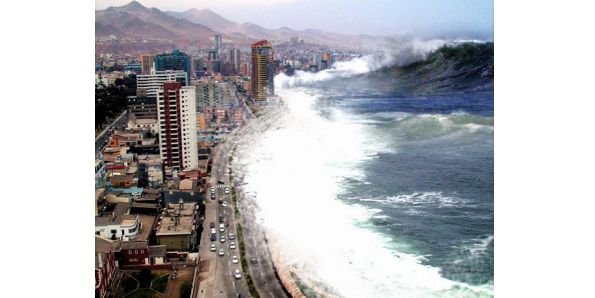Natural disasters disrupt the normal functioning of natural processes adversely affecting the existence of life on earth. Widespread floods, earthquakes, tornadoes and hurricanes can cause the mass destruction of both living and non-living things. The affected surface is damaged beyond recovery leaving the surface affected scarred forever. An estimate of about 905 calamities has been reported worldwide in 2012.
Given below is a list of the top ten natural calamities that scar the earth’s surface:
1. Hurricane
Image may be NSFW.
Clik here to view.
Hurricanes are characterized by strong winds and thunderstorms that can produce heavy rains. They normally occur over large bodies of warm water. In addition to the strong winds and heavy rains caused by a hurricane, they also generate high waves and tornadoes, thereby posing a great threat to the coastal regions. Hurricane Franklin that occurred in the North Atlantic Hurricane basin is an example of a strongly sheared tropical cyclone. The heavy rains can even create floods which also adversely affect the human population. Most hurricanes happen during the late summer when the difference between the land and sea surface temperature is at its peak.
2. Earthquake
Image may be NSFW.
Clik here to view.
The rapid release of energy from the earth’s crust creating seismic waves is responsible for an earthquake, also known as a quake or a tremor. The magnitude of an earthquake is measured using a seismometer. The 9.0 magnitude earthquake that struck Japan in 2011 is the largest among the recent reported tremors. An estimate of around 500,000 earthquakes occurs every year of which about 100,000 can be felt. While the earth’s tectonic plates are responsible for most earthquakes, certain human activities can also trigger a temblor. Drilling and injecting liquid into wells, coal mining and oil mining are some of them. The 2004 Indian Ocean earthquake of magnitude 9.1-9.3 is the third largest earthquake that struck the world.
3. Tornado
Image may be NSFW.
Clik here to view.
Tornadoes are violently rotating columns of air that are also referred to as twisters or cyclones. They often look like a funnel suspended from the clouds. A typical tornado takes the shape of a condensation funnel and has a wind speed of less than 110 miles per hour. Tornadoes occur frequently in tropical areas that lie close to the equator and are less common in high latitudes. The Enhanced Fujita scale (previously called the Fujita scale) is used to calculate the amount of damage caused by a tornado. Antarctica is the only continent that has never been affected by a tornado.
4. Volcanic Eruption
Image may be NSFW.
Clik here to view.
The expulsion of lava, tephra and other gases from a volcanic vent or fissure is termed as a volcanic eruption. Volcanologists have briefly classified the eruptions into three types- magmatic, which involves and outward propulsion from the magma due to the decompression of gases, phreatomagmatic which happen in a manner that is exactly opposite to that of a magmatic eruption and phreatic which is caused by the super heating of steam within the magma. The eruptive strength is measured using a Volcanic Explosivity Index, a magnitude scale ranging from 0 to 8.The different types of eruptions are named after famous volcanoes where a similar characteristic has been exhibited.
5. Tsunami
Image may be NSFW.
Clik here to view.
A tsunami also known as a harbour wave is a series of water waves caused by the displacement of a large water body like an ocean or a sea. Underwater explosions, volcanic eruptions, earthquakes or landslides that happen under the earth’s surface can trigger a tsunami. Thucydides a Greek philosopher of the 5th century BC claims that a tsunami is caused by a submarine earthquake. However the exact nature of a tsunami remains unclear even today. In appearance, the tsunami wave resembles a rapidly rising tide and is hence often referred to as a tidal wave. They occur in a ‘wave train’ at periodic intervals ranging from minutes to hours. Though warning systems are established in prone areas, a tsunami cannot be precisely predicted even if the magnitude and location of an earthquake is known.